Back angle and pressure on the spine
The back angle changes from sitting to standing. There is the most pressure applied on the spine when we have an acute back angle, which can happen when we are slumped forward at our desks. Leaning back and opening the angle releases pressure, which is reduced yet further when we stand, and even more when we walk and move about.
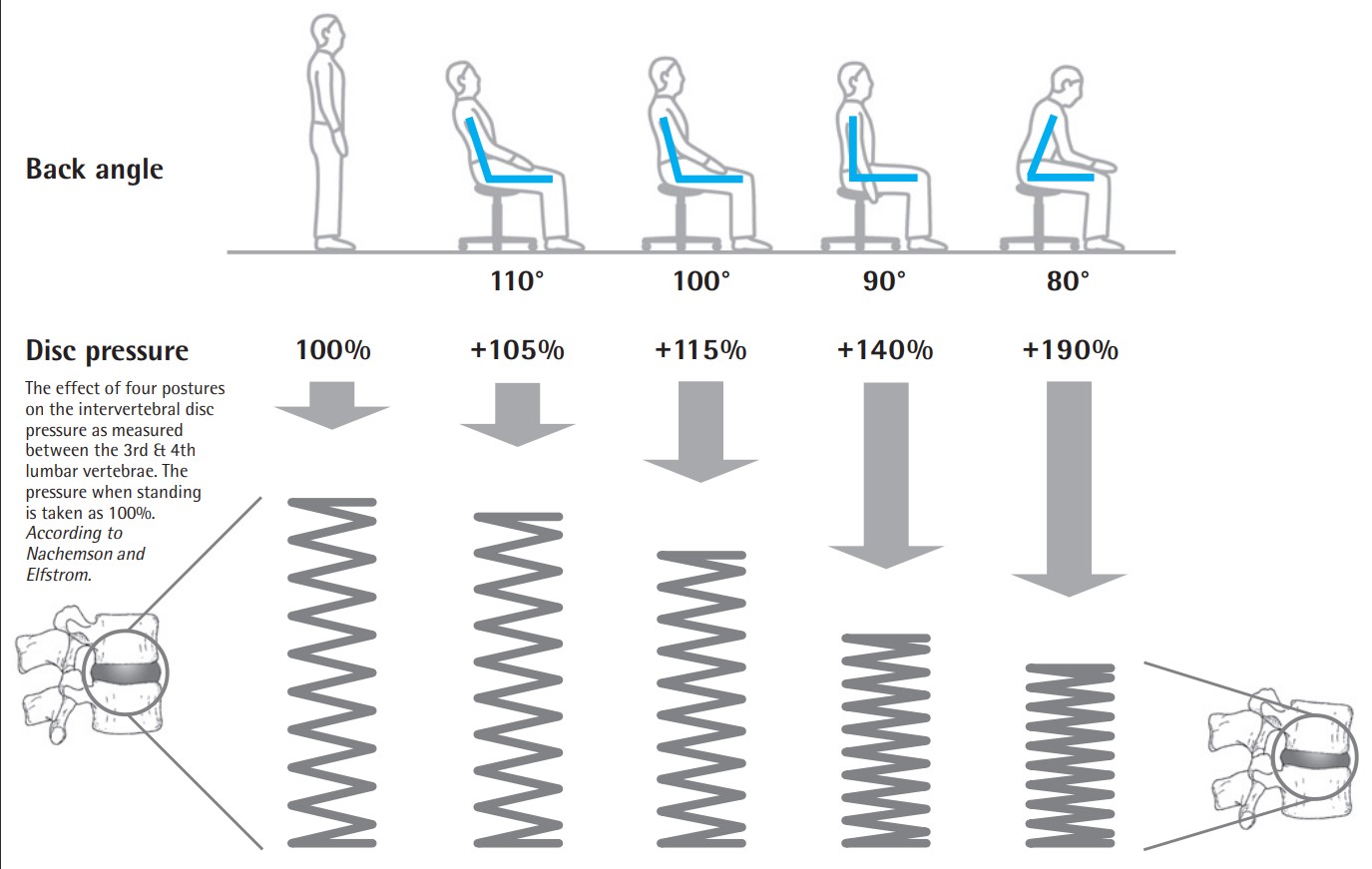
The dangers of sitting
Changing from a standing to a sitting position makes the top of the pelvis rotate backwards. This flattens the natural lumbar curve of the spine, causing an increased uneven pressure on the intervertebral discs. On leaning forwards, or slouching (80° angle) the spine describes a ‘C’ shape, further increasing lumbar disc pressure (+190%) and extra strain is placed on the back muscles. Commonly we are not aware of this pressure on the spine. The discs become dehydrated, muscles stiffen and tighten with less oxygen flow, and they can then cramp.
How posture controls disc pressure
The secret of varying and reducing disc pressure while sitting is to change your position frequently or, even better, use a floating tilt chair that allows for constant change.
Encourage the spine to lengthen into its neutral ‘balanced’ position, as when standing. By sitting upright and leaning slightly backwards (100° angle) the top of the pelvis rotates forwards allowing the spine to hold its natural ‘S’ shape. There is a better balance in the spinal column, with the head centrally positioned over the spinal column, and less activity is required from the supporting musculature. Weight is more evenly distributed across the intervertebral discs.
Seat Angle
When setting up a workstation it is essential that the hips are higher than the knees, to encourage a healthier, more open back angle. If you are taller than average you will probably need your desk higher than the average 71-73cm desk, so that you can raise the chair comfortably to sit under the desk. I now strongly recommend sit-stand desks for anyone who is doing prolonged sitting to work so they can constantly vary their position and regularly change their back angle. It still remains, sadly, that we can all get stuck in one position for far too long if we are not careful, and this can lead to pressure on the spine. This immobility in a sedentary position is a huge cause of back pain.
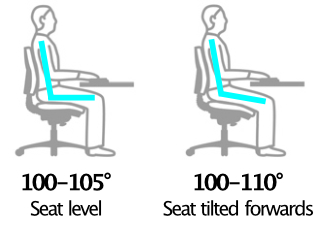
The body is designed for movement – so by occasionally adjusting the seat angle while you work, you will derive the most benefit. Change your posture to suit the task. To stabilise the lower part of the spine, which in turn controls balance in the upper spine, sit well back in your chair to maintain contact with the backrest.
Compression forces on the spine
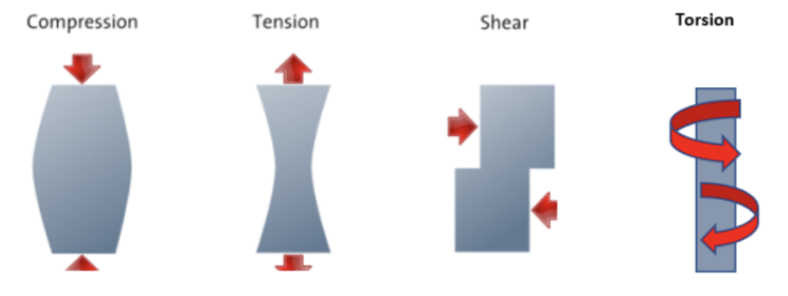
Our spines need to be flexible and responsive to the various forces that we subject it to during our daily lives. The 3 main types of forces we experience are shown below above, and below we will explain the type of exercise that creates the specific forces.
Compression forces
This type of force presses the vertebrae and the intervertebral disc, commonly when we sit. Spinal traction is the opposite, pulling the vertebrae apart, and the discs are distracted, for example hanging upside down from your feet. The release of compression can also occur when we are lying down to rest our back. In a sumo dead-lift, where you’re more upright, there will be more compressive forces on the spine.
Shear forces
Shear forces happen mostly when we bend forward, and then lift, which can be done very easily. The spinal muscles need to respond to prevent the vertebrae sliding forward on one another. In a conventional dead-lift, where you’re more inclined or bent-over, there will be more shear force.
Torsion or rotational forces
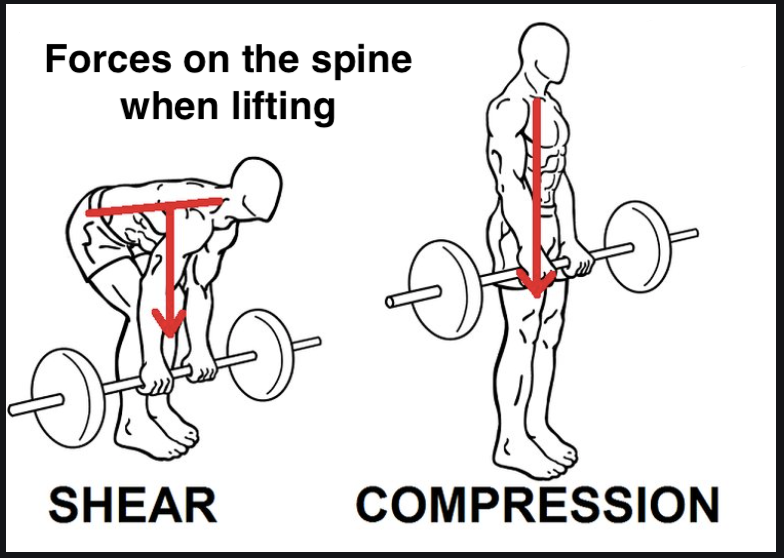
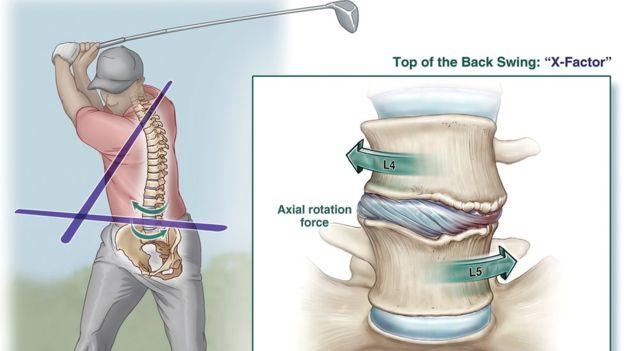
This type of force is found in twisting movements that occur when one vertebrae is rotating on top of the one below it. The most striking example is lifting something, twisting the spine without moving the feet to put it down. Many of us are very guilty of this and are unaware of the stresses and strain it can put on the spine. In sport there are many examples – think of the golf swing or a hammer thrower – although the stress is minimal with good technique.
When we exercise we need to allow and encourage a mixture of these forces. Usually during activity we incorporate a mixture of all three forces, but not excessively, as an imbalance can cause strain.
Pressure on the spine from lying, standing to sitting
The following graph shows well the pressure on the spine in varying positions:
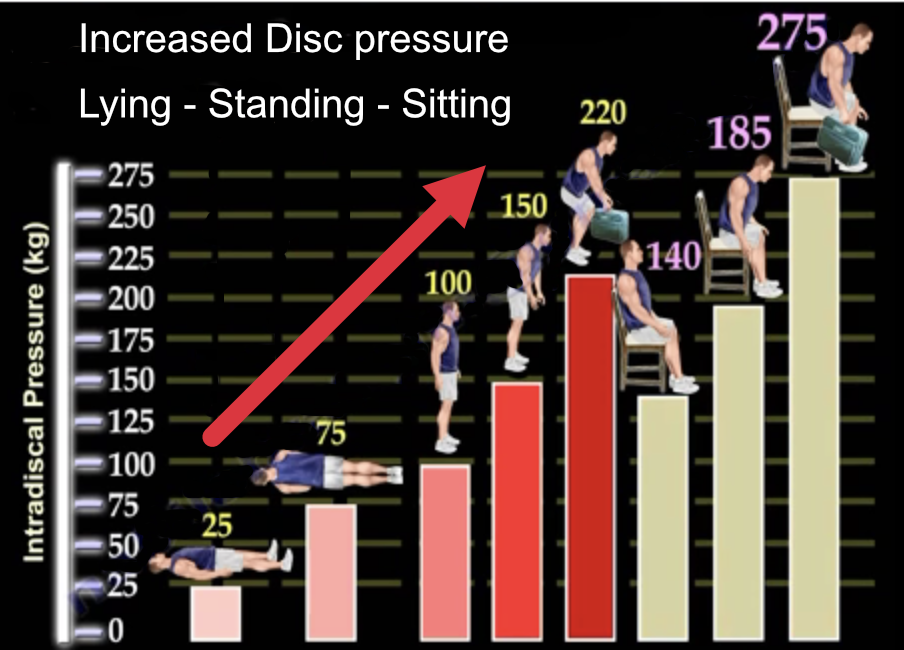
The message is clear – lifting heavy objects wrongly (which we all know) and sitting are the worst for compression on the spine, and the pressure increases if we bend forward.
Reducing pressure on the spine
Lastly it would be important to mention one of the best ways to reduce spinal compression is to rest the back lying down for about 20 minutes with the legs pointing to ceiling or with knees and hips both at 90 degrees:

Taking breaks is beneficial in a host of ways! Please read my blog about the health benefits of taking a siesta.
*The use of a forward tilting seat is not advisable for certain medical conditions, if there is any pain do not persist, use the seat in a level position or where comfortable. Initially vary posture regularly to allow muscle groups to adjust to the new position.